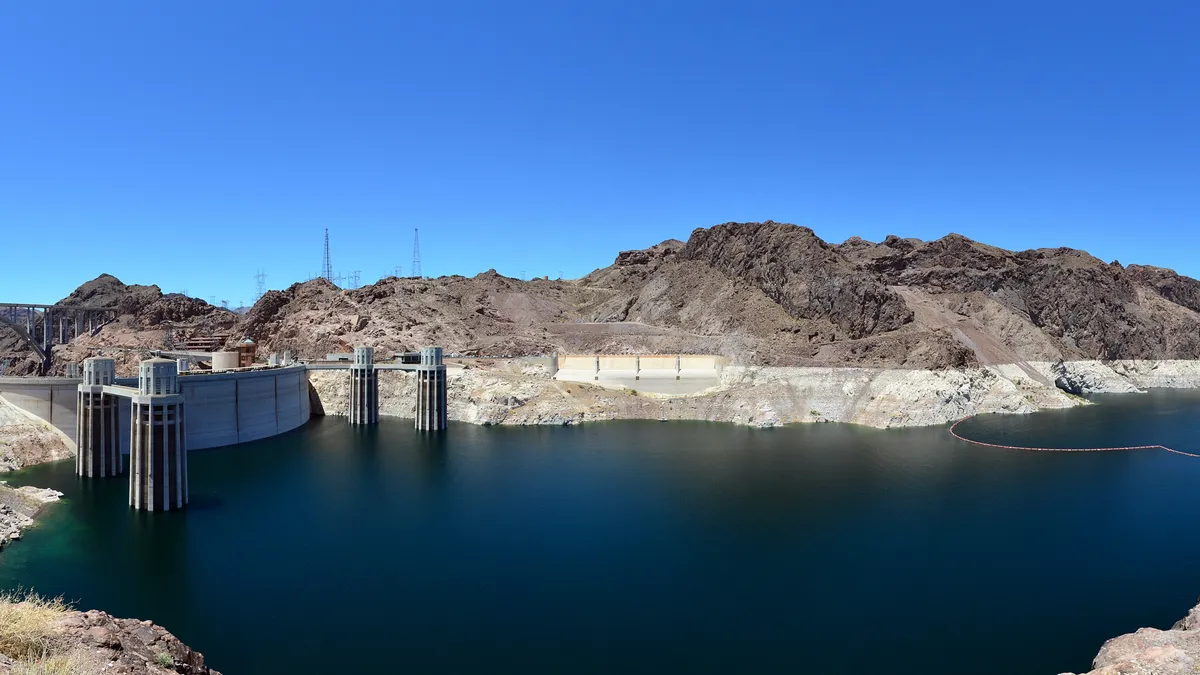Dive Brief:
-
The Los Angeles Department of Water and Power (LADWP) is investigating a project that would use Hoover Dam as part of a $3 billion pumped hydro storage project.
-
The plan calls for using solar and wind resources to pump water back up to Lake Mead, which is impounded by the Hoover Dam, where it would be stored until needed to generate power.
-
The project would install a pumping station about 20 miles downstream from the existing dam to move water back up to the lake.
Dive Insight:
Rated at 2,080 MW, Hoover Dam is one of the largest hydroelectric plants in the country and its location on the Arizona-Nevada border near Las Vegas puts it within reach of one of the biggest markets for electric power.
However, Hoover Dam does not generate as much electricity as it could. Between water management issues and drought related low water levels in Lake Mead, it only runs at about a 20% capacity factor.
LADWP's plan aims to make better use of the Hoover Dam facility by using it as part of a pumped hydro storage plant. Most pumped hydro plants pump water into a holding reservoir when demand is slack and electricity prices are low. The water is released through turbines to generate power when demand, and prices, rise.
Although LADWP's plan has enormous potential, it's still in its early stages. "We are doing some initial assessments and engineering assessments," Sam Mannan, a project manager at LADWP, told Utility Dive.
Unlike most pumped hydro projects, however, LADWP's plan would use an external source of power to pump water back up to Lake Mead, and it would be independent of the physical plant of the Hoover Dam, which is owned by the U.S. Bureau of Reclamation.
The plan calls for the construction of a pumping station about 20 miles downstream from the dam, at a site not yet determined, to be powered by wind turbines and solar farms.
The larger goal of the project would be to help LADWP, and California, manage the growing amount of renewable energy on its grid. The state has a goal of meeting 50% of its electrical needs with renewable resources by 2030. That goal comes with challenges, however. Often more solar power is generated during the middle of the day than is needed. When the sun goes down, it leaves a gap that has to be quickly filled by other generation sources, often gas-fired peaking plants.
A renewables-driven pumped storage plant could absorb excess renewable energy and store it as impounded water until demand rises. Then, the water is released and run through turbines to generate power.
Many details still need to be worked out on the pumped storage plant proposal, such as the location of the pumping station and its potential impact on downstream communities that rely on the river. LADWP would also need to work out a financial arrangement with the Bureau of Reclamation.
"We have the proposal, but not enough information to have a position on it one way or the other," Bureau of Reclamation spokeswoman Patricia Aaron told Utility Dive.














